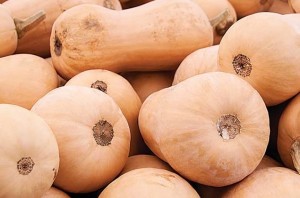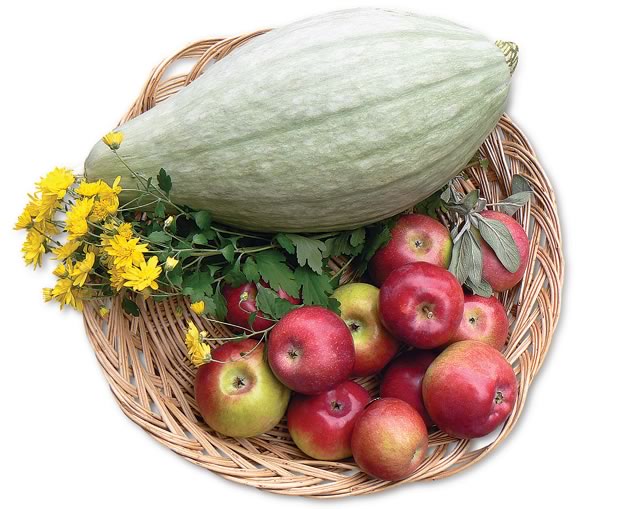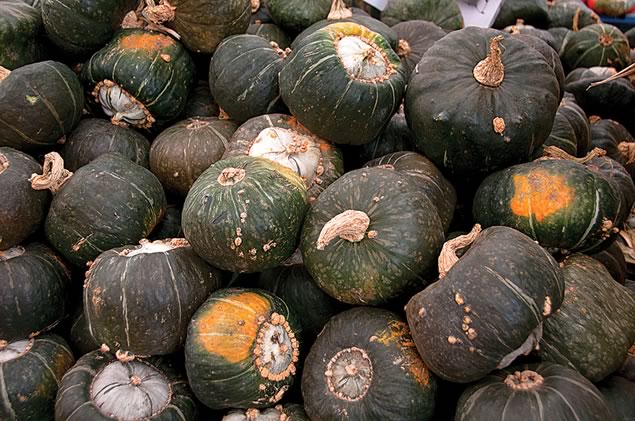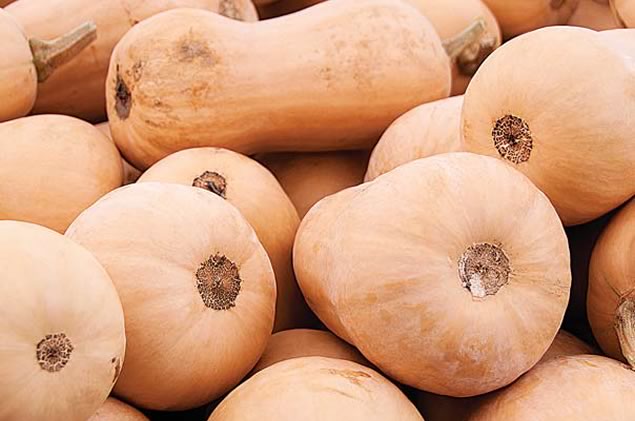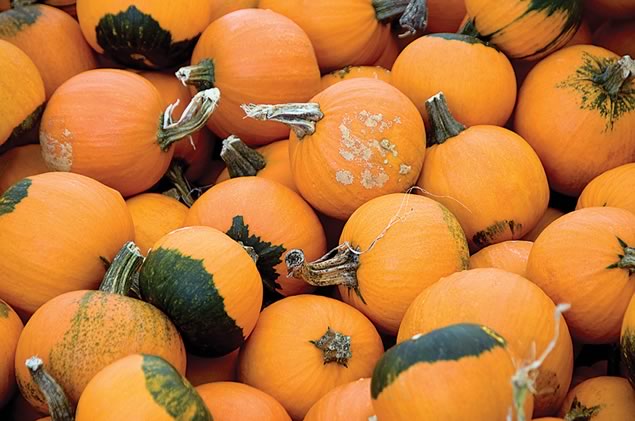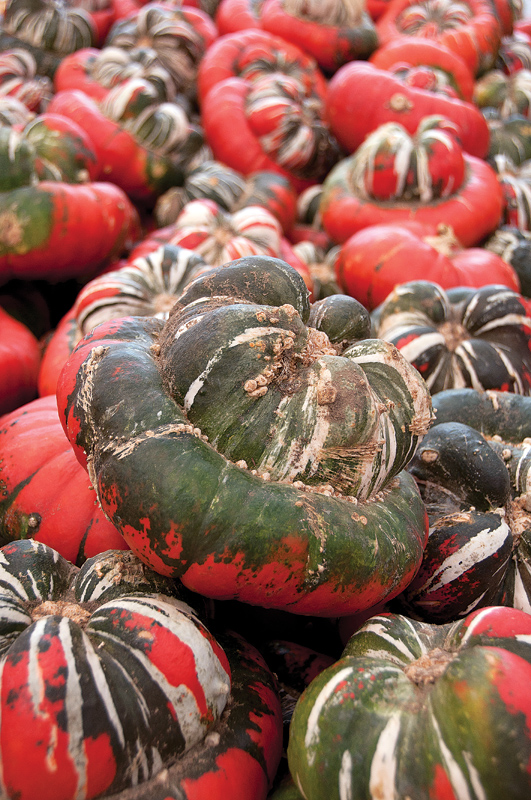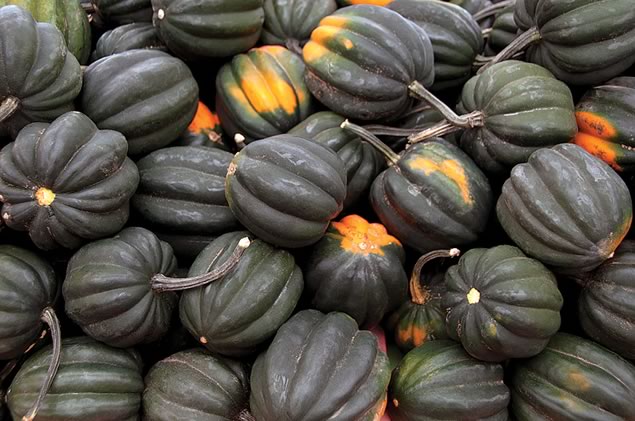An Embarrassment of Squashes
The humble squash has as many culinary uses as it has sizes, shapes and varieties.
The humble squash has as many culinary uses as it has sizes, shapes and varieties. Buttercup, Butternut, Delicious, Hercules, Sweet Dumpling, Pumpkin, Golden Nugget – if this is starting to seem like a string of endearing pet names, then you don’t know your winter squash! And that’s not the half of it. There’s Spaghetti, Royal Acorn, Blue Hubbard, White Hubbard, Boston Marrow, and on and on. And just like the wonderful assortment of names, the shapes, sizes and colours of winter squash are varied and plentiful.
There is mild confusion as to the fruit/vegetable status of squash. As it turns out, it is both. In culinary terms, it is a vegetable, but in botanical terms it is a fruit because it contains seeds. Squash is loosely divided into two categories: summer squash and winter squash. Summer squash, such as zucchini and patty pan, are ready to be eaten soon after they develop, and are tastiest when their skins are young and tender. Anyone who has ever experienced the opposite – a giant, tough-skinned zucchini at the end of the season – will wholeheartedly agree.
Winter squash, on the other hand, are meant to be tough-skinned. They mature on the vine throughout the cool days of autumn, lying on the ground for weeks before they are mature and ready for harvesting. There are four main species of winter squash: cucurbita pepo, cucurbita moschata, cucurbita mixta and cucurbita maxima. Winter squash are fittingly named because they are ready just in time for winter storage in a cool, dark and dry place, where they should be fine for about two to three months.
I’ve grown squash in my garden with easy success these past few years. Although I reserve a section for squash, I can be sure the vines will carry them to unexpected places, which makes for something of a treasure hunt. Squash seeds need bright sun and warm, well-drained soil. Your best bet is to gather soil into a small hill, about six inches high and one foot wide, and plant a few squash seeds on the top of the mound, at equal distances apart. The mound ensures good drainage. Make sure you leave some space for the spreading vines. Once they start growing, you can direct the vines as you see fit.
You can also try the traditional Three Sisters method. It was used by Native Americans and capitalizes on a symbiotic relationship between corn, squash and beans. The cornstalk offers support for the climbing beans, the squash vines provide ground cover to minimize the weeds and conserve soil moisture, and the beans supply nitrogen to the soil for the benefit of all three.
One bonus about growing squash is that the plant offers an array of edible options beyond just the flesh of the fruit. I thought I had covered the bases, having had my share of roasted squash seeds, and even tried my hand at battered and fried squash blossoms. Yet while I was on a visit to the African country of Zambia this past spring, I was won over by sautéed squash greens, which I had never before even considered harvesting. Yet another boon of this versatile food.
With its diversity, heartiness and nutritional properties, squash can indeed be considered one of fall’s local superfoods.
More Info
Belfountain Blue
One local community places so much value on squash they have made it into a mascot. Every October, the Belfountain community hosts a Squash Growing Contest as part of their annual Salamander Festival. The contest’s categories range from oddest shaped to doggone cutest to most animal-looking. However, the most coveted prize is for The Belfountain Blue category, because each year the winning squash becomes the festival mascot, crown and all.
Queensland Blue, Guatemalan Blue Banana, Marina di Chioggi and Sibley
When the contest began a few years ago, the Belfountain Community Organization ordered rare heritage blue squash seeds online. Shortly thereafter, the likes of Queensland Blue, Guatemalan Blue Banana, Marina di Chioggi and Sibley varieties were growing in gardens throughout Belfountain, and continue to be planted each year. These varieties are all part of the cucurbita maxima species, which has a high chance of cross-pollination when one or more types are planted in the same garden. Through such innocent genetic manipulation, the Belfountain Community Organization is hoping to develop its very own unique breed of blue squash named, of course, The Belfountain Blue.
Related Recipes
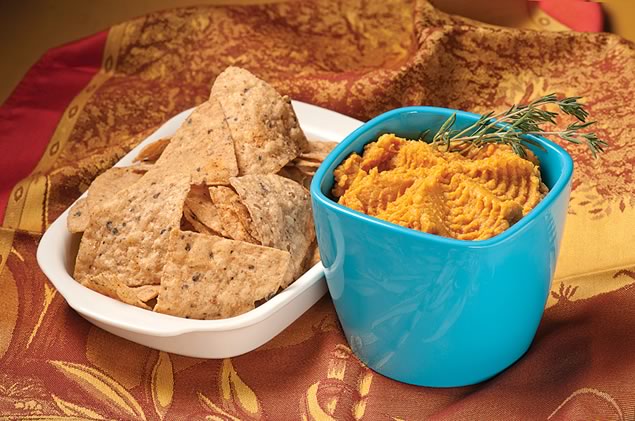
Pumpkin Hummus
Aug 18, 2011 | | AppetizersIt is excellent as an hors d’œuvre with vegetable crudités or crackers.
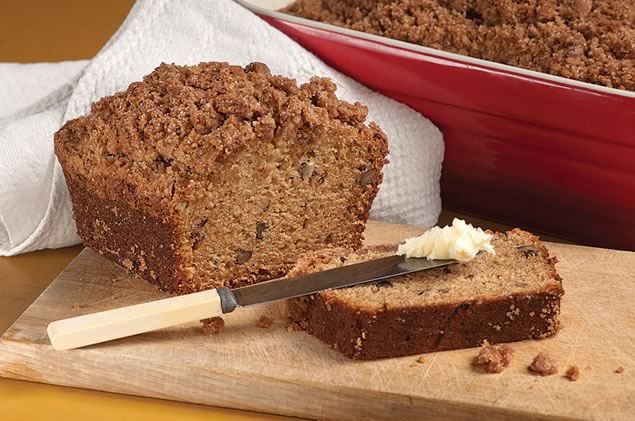
Squash Pecan Bread
Aug 18, 2011 | | BreadsIt freezes beautifully, so make both and put one in the freezer for later.

